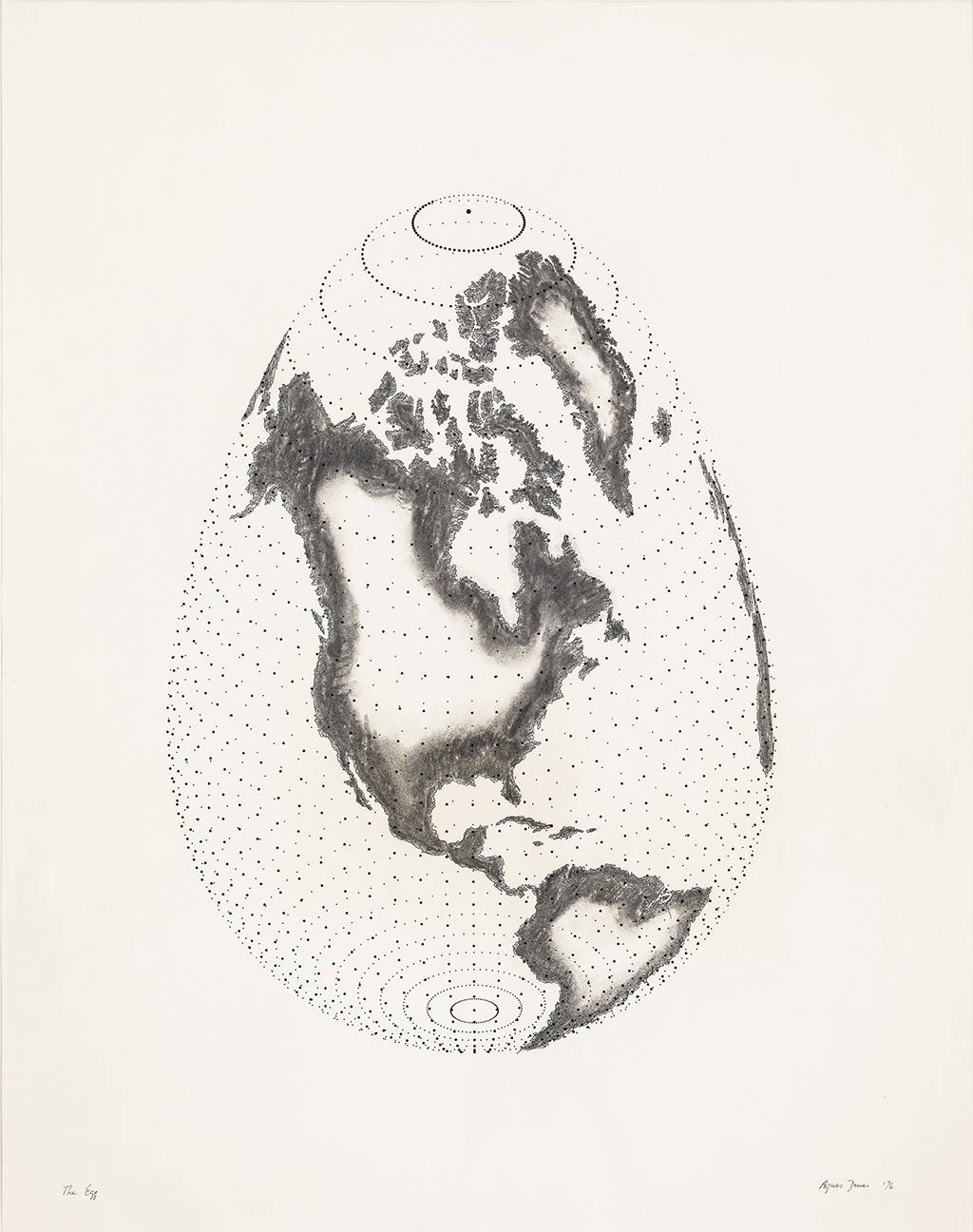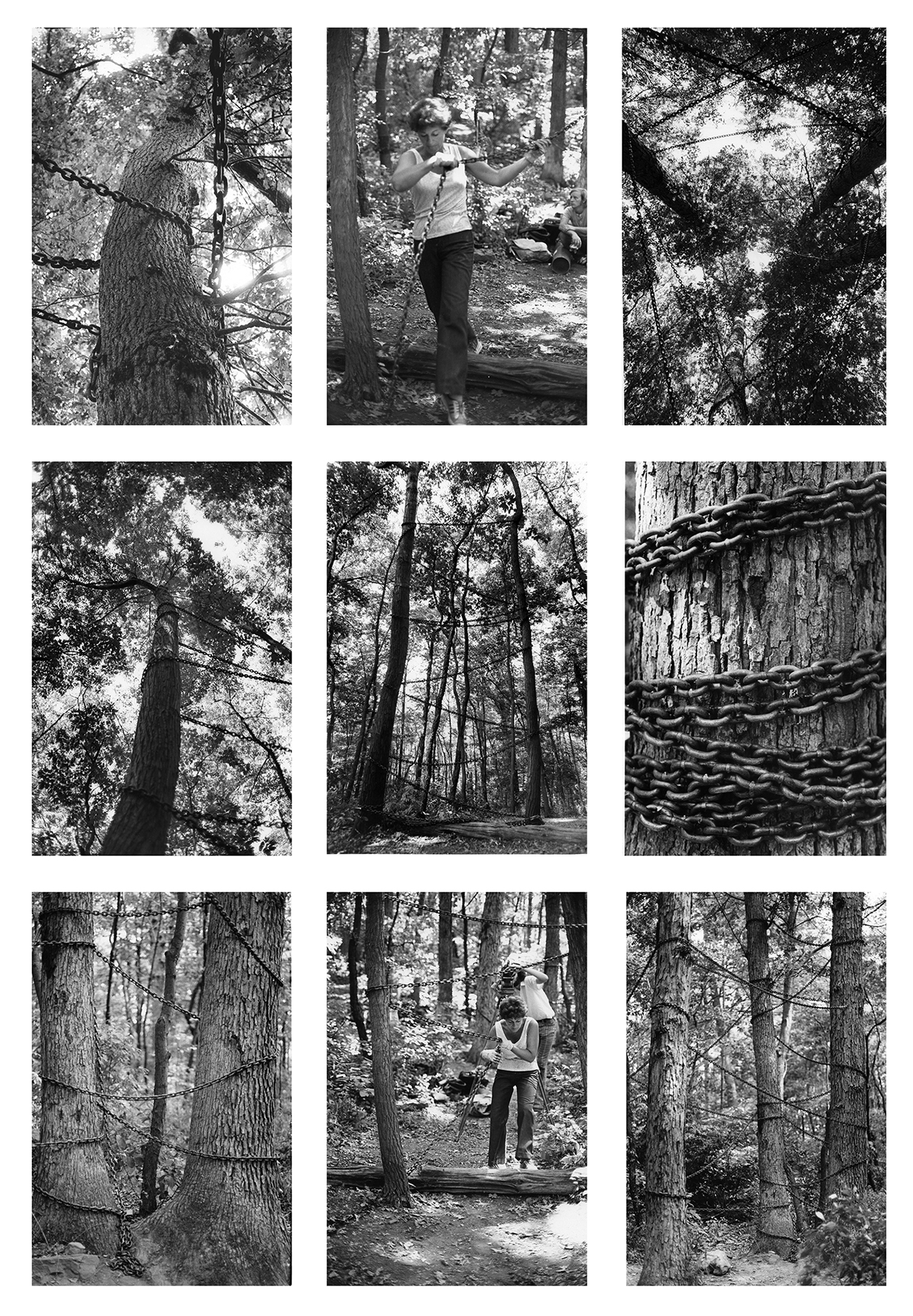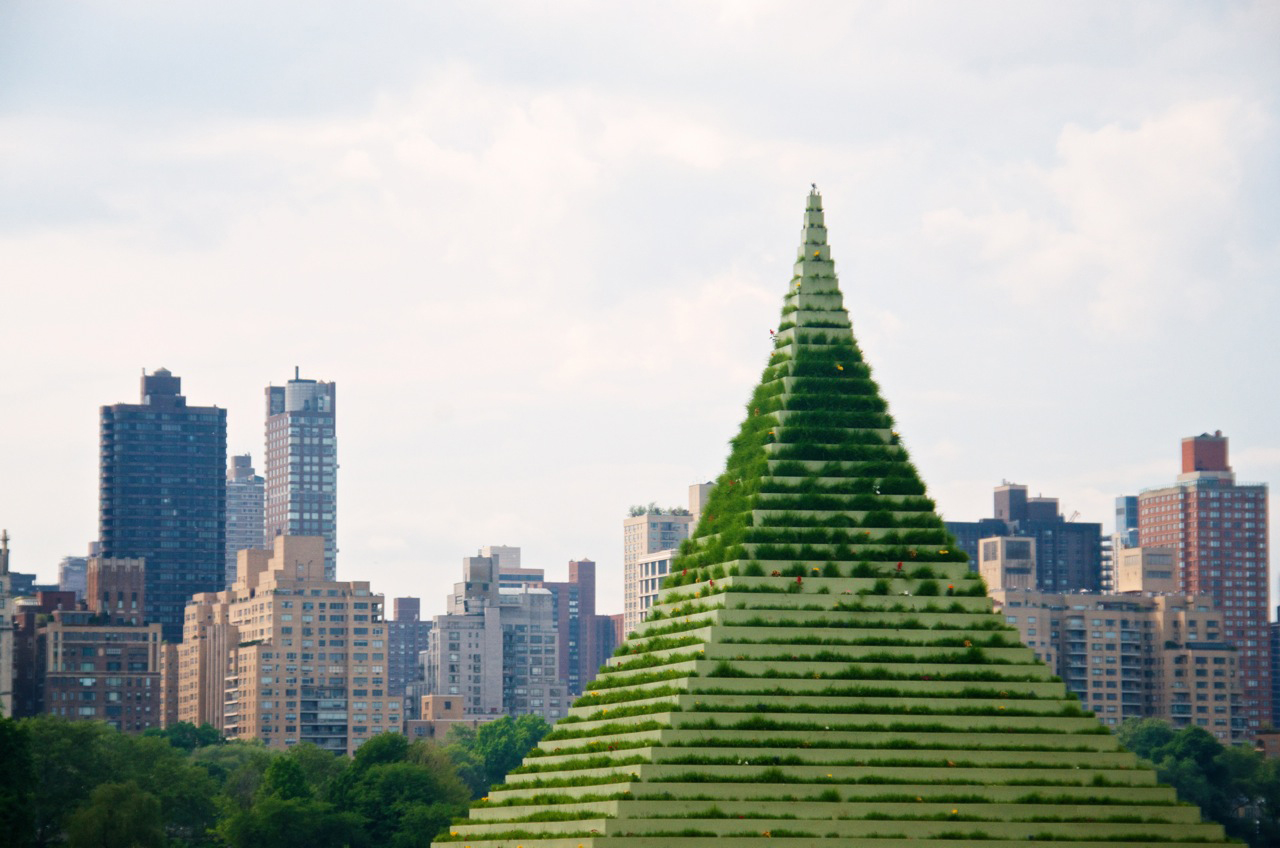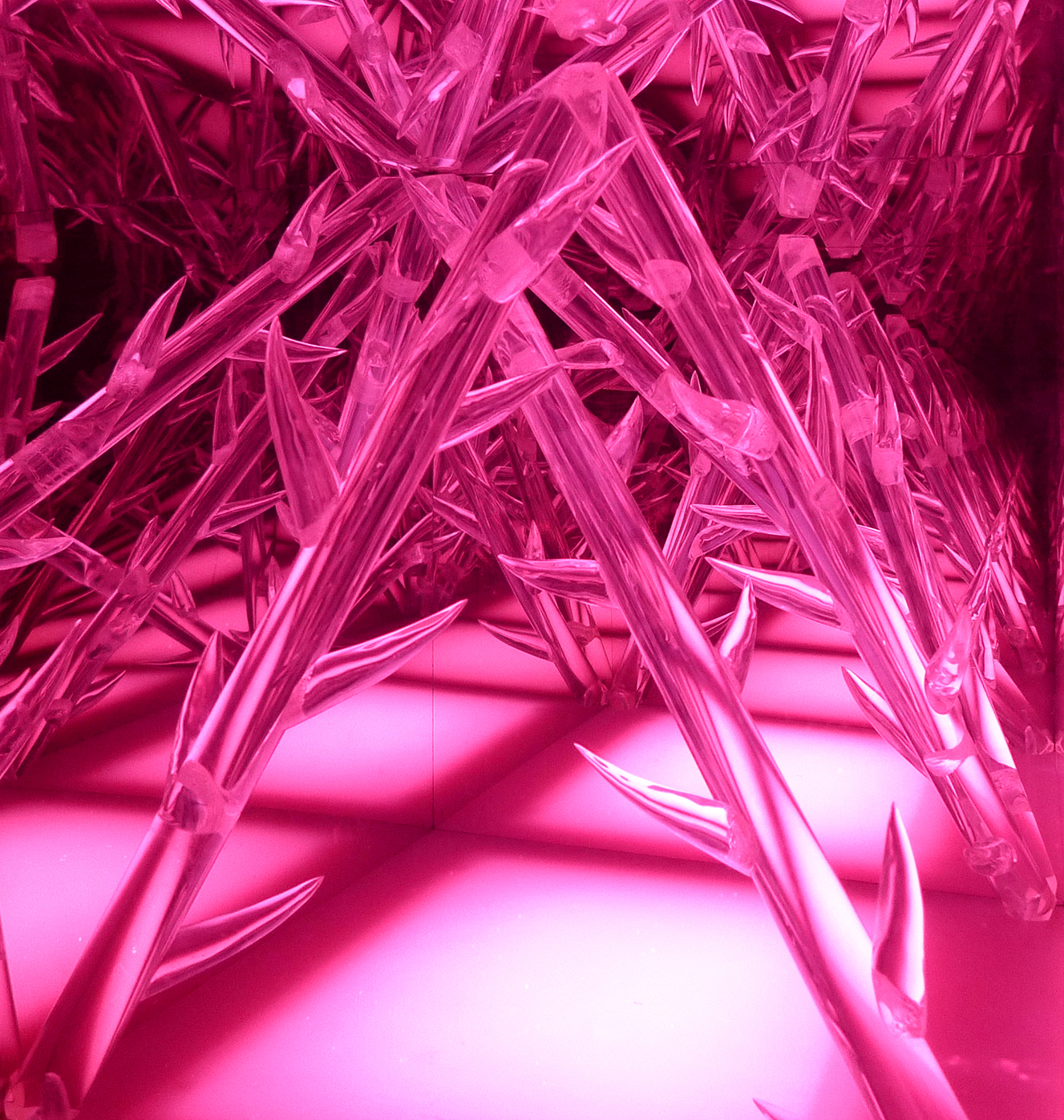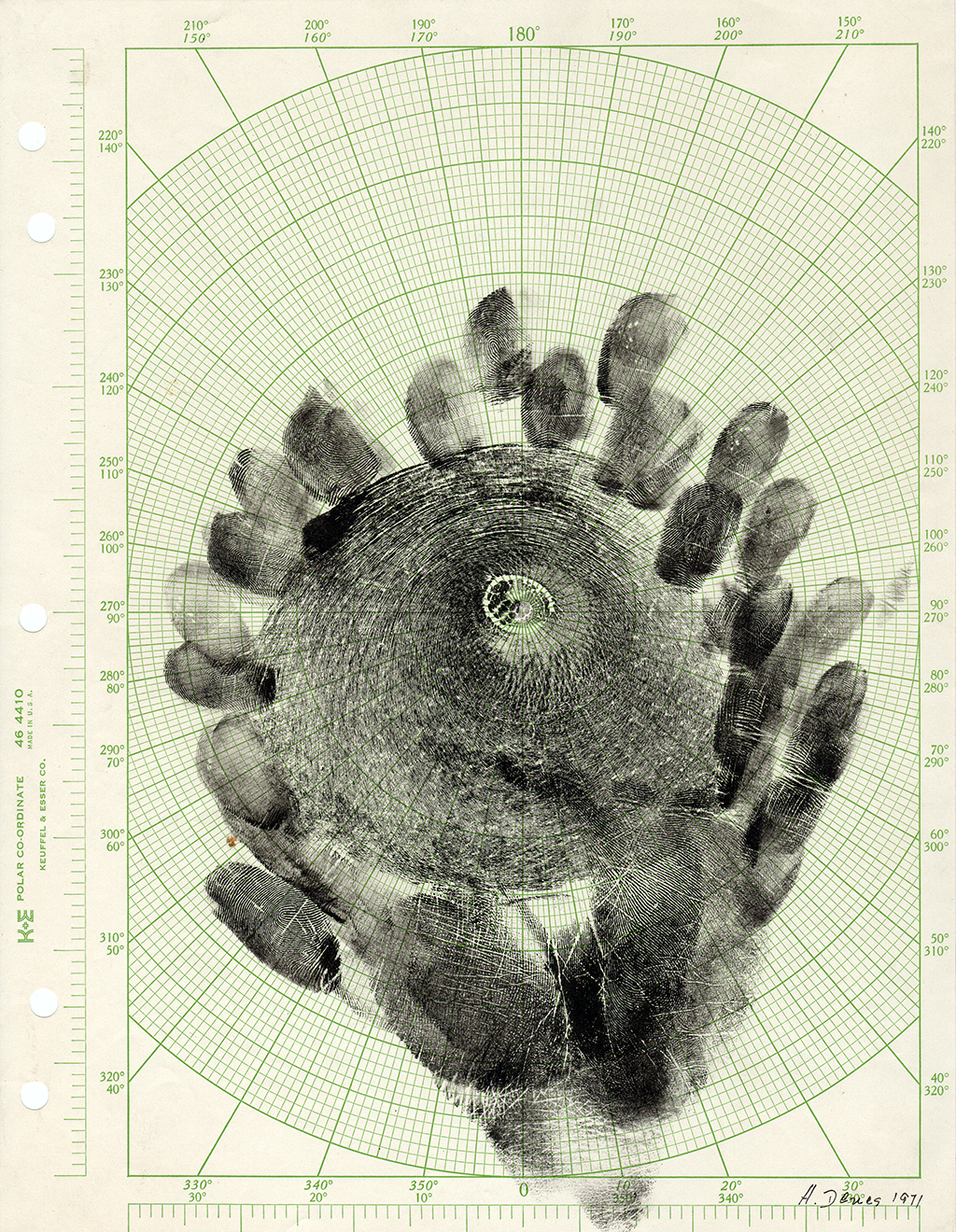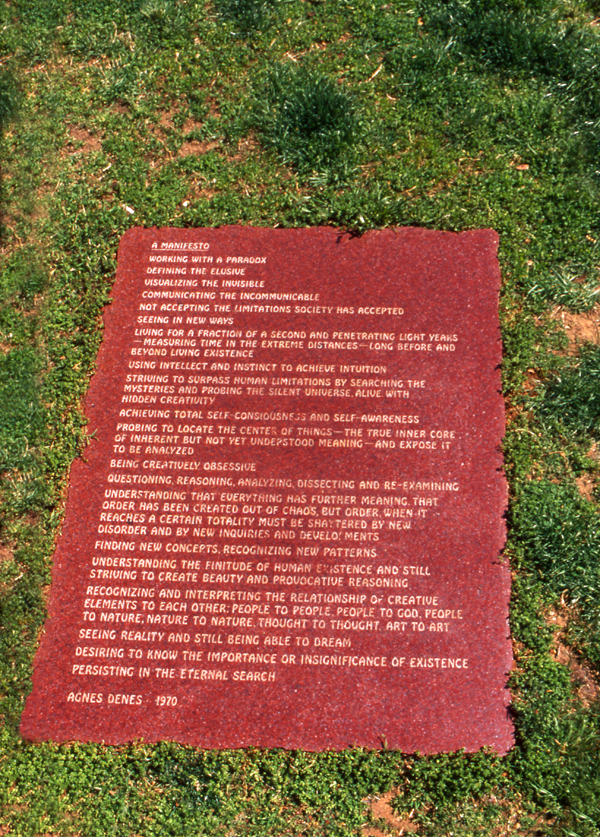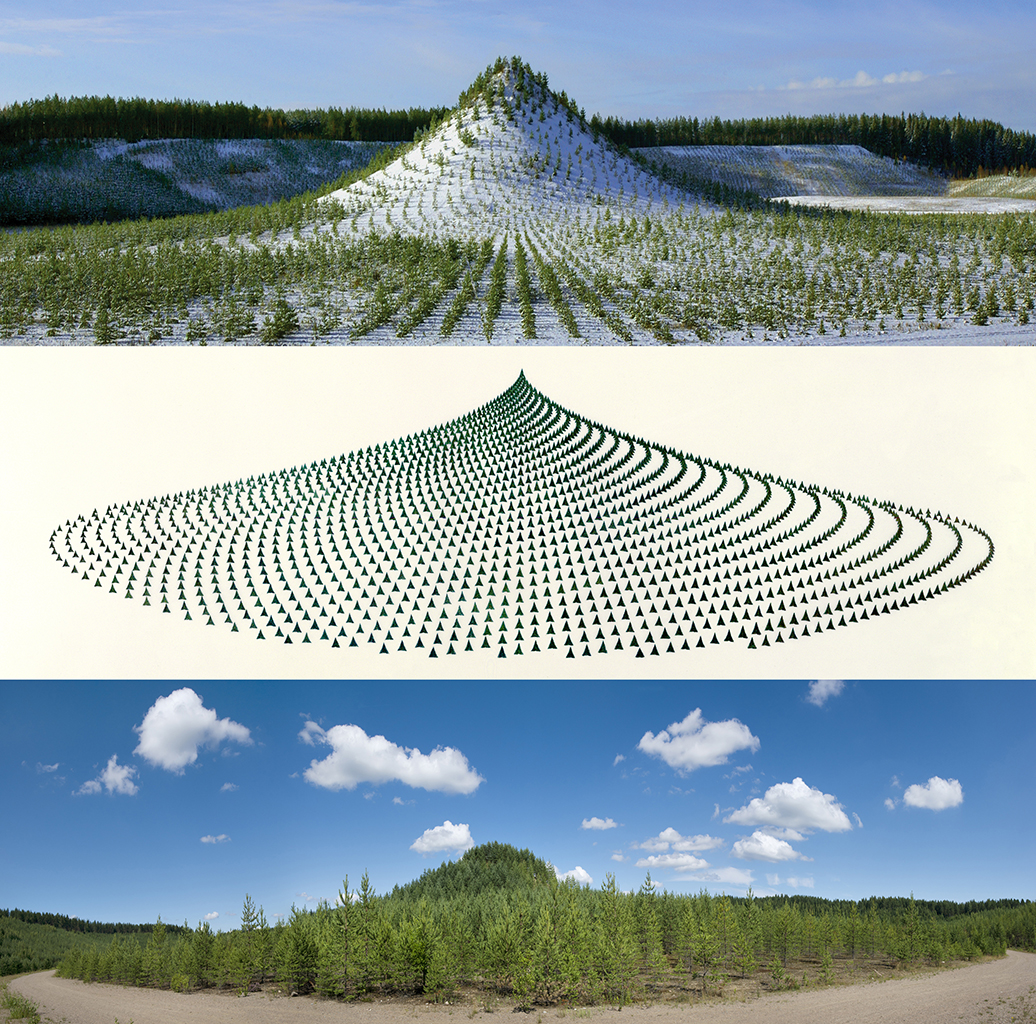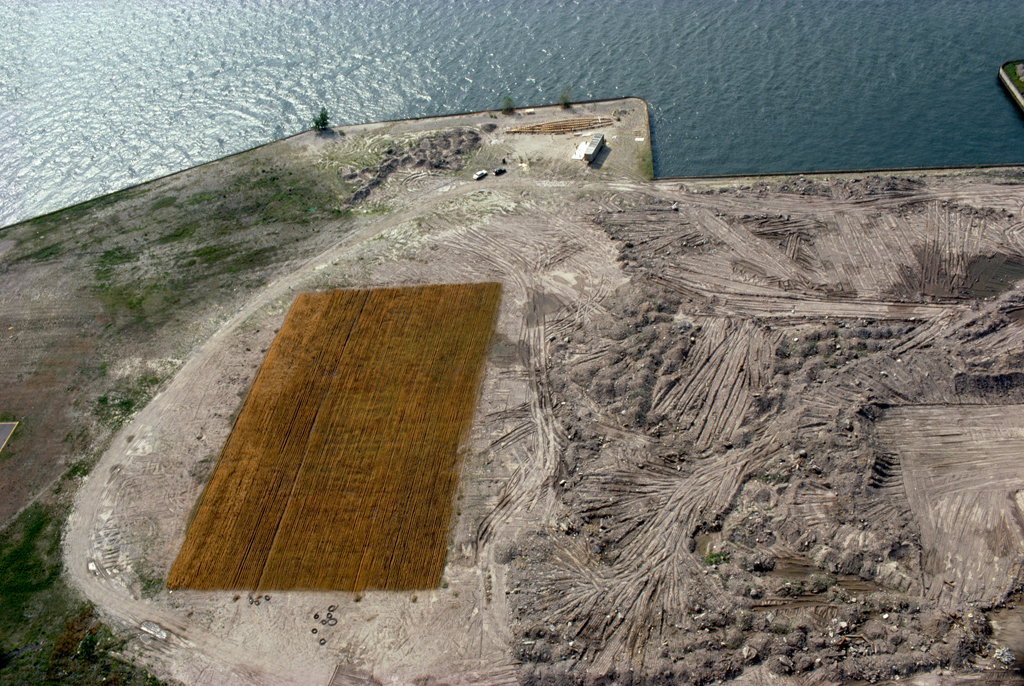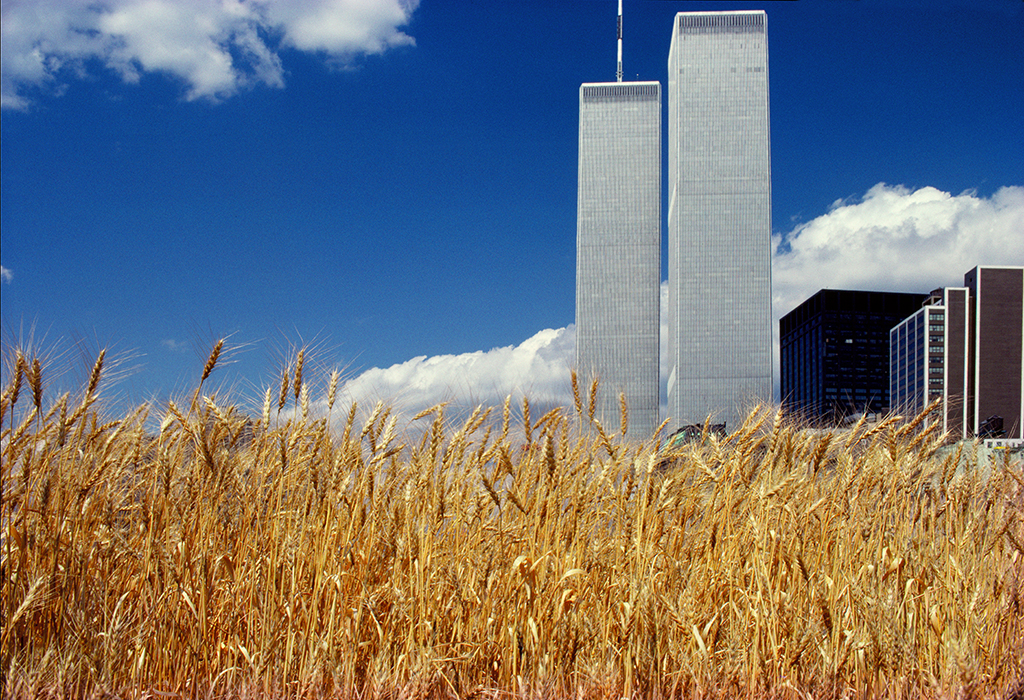“In my work everything, including symmetry, is created through a conscious use of instinct, intellect and intuition. When I visualize (give form to) processes such as math and logic, or when I apply X-ray technology and electron microscopy to organic and crystal structures, one might say I reveal well-defined symmetries and anti symmetries. When I deal with abstract concepts definitions blur and the symmetries go beyond ordinary mathematical confines.”
Agnes Denes is internationally recognized as a pioneer of the Land Art movement, as well as an innovator in ecological thinking within contemporary art. With works such as Wheatfield—A Confrontation and Rice/Tree/Burial, Denes reimagines humankind’s relationship to Earth by outlining models of symbiotic, responsible, and sustainable living for future generations. Venturing beyond a single subject matter to create new pathways of communication between present and future, Denes incorporates several practices in her work concerned with the land and the dialectical relationships between mathematics, philosophy, ecology, and other sciences. Denes’ exploration into these many different fields of thought coalesce into a practice of ontological thinking that transcends any attempt at a neat categorization of her work.
Denes was born in Budapest, Hungary in 1931. To escape Nazi occupation, Denes and her family moved to Sweden in the mid-1940s, later relocating to the United States. The constant uprooting of her home life, coupled with the challenges posed by a language barrier, caused a young Denes to seek solace in visual art. She would eventually go on to study painting at the New School and Columbia University in New York. Feeling limited by both the vocabulary of painting as well as insufficient attempts at categorizing her early work, Denes made the transition to land art and other mediums.
Since the late 1960s, Denes has utilized science-based philosophies in her practice to create visual metaphors that seek to expand and redefine the field of science. Patterns, symbols, maps, codes--all these systems of communication that are familiar to us in our daily lives also serve to explain abstract notions of human existence. In an article written for Art Journal in the spring of 1996, Denes reflects on past work, like her Introspection series, that explores the language associated with molecular genetics. She writes: “When art renders into visual form these analytical processes, the hybrid becomes the script in a new language of seeing and knowing: a summation and dramatization of new associations and analogies.” Referring to her work as a “new science,” Denes attempts to dissolve the barriers between disciplines in order to pave a new pathway for understanding our own humanity.
Although Denes’ work has evolved over the decades, her subject matter continues to be grounded in larger issues that impact society. She is particularly concerned with the effects that urban development and population growth have on the environment. One recent example of Denes’ multidisciplinary approach to environmental art is her 2013 project A FOREST FOR NEW YORK—A PEACE PARK FOR MIND AND SOUL. Located in the Edgemere landfill in Queens, the project--which is still underway, and will take at least a couple centuries to grow to completion--aims to establish a forest of 100,000 trees on the 117 acres of barren land outside the omphalos of New York. Denes has already fabricated other forests in cities around the world, including Finland and Melbourne.
On her website, Denes writes: “The importance of this project is not only to help with health conditions but to transform a treeless, barren landfill into a thriving forest. More than merely cleaning the air and ground water, a place of beauty will be created that people will be able to visit and take pleasure in, a destination to give them strength for the challenges of modern life.”
Being involved with A.I.R. at its inception allowed Agnes Denes to share her vision for a more creative world. She sought to become a role model for other women artists, and her innovative practices and ambitious pursuits have since extended far beyond the walls of the gallery space. Denes has shown in more than 450 galleries and museums around the world, including the Museum of Modern Art, the Metropolitan Museum of Art and the Whitney Museum in New York, and has earned fellowships at the Carnegie Mellon University, and the Courant Institute at N.Y.U. In both a literal and figurative sense, Denes has traversed fields often unwelcome to women, and continues to carve new pathways for future generations with every project she embarks upon.
member 1972-78 | b. 1931 | New York, NY
+ Select Exhibitions
Agnes Denes: Absolutes and Intermediates, 2019-20, The Shed
Wheatfields for Manhattan, 1982, Public Art Fund
+ Selected Press
Elle (2019) - Now Is the Time to Get Into Land Art Pioneer Agnes Denes
Blok (2019) - ‘Agnes Denes: Visual Philosophy 1968-2018’ at acb Gallery
Cultured Magazine (2018) - Agnes Denes Brings Her Boundary Pushing Land Art to the Shed
The New York Times Style Magazine (2018) - The Woman Who Harvested a Wheat Field Off Wall Street
Interview Magazine (2015) - Agnes Denes
Studio International (2014) - Agnes Denes: Interview
+ Publications
Documenta 14 - Agnes Denes
Art Journal (1996) - Artistic Vision and Molecular Genetics
+ Public Collections
Museum of Modern Art
The Metropolitan Museum of Art
Leslie Tonkonow Artworks + Projects
+ Website
